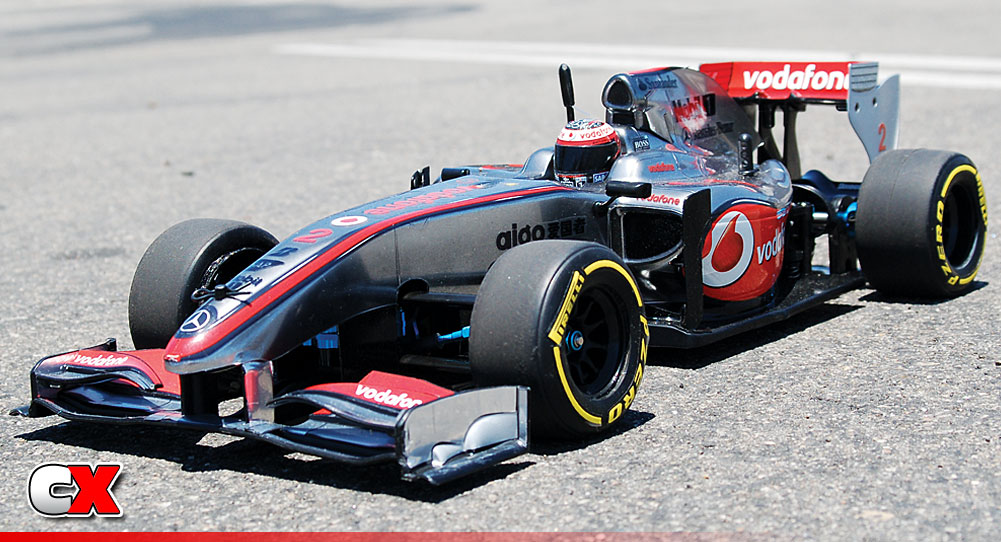
For years, Formula 1 (or F1) has been the most prestigious class in automotive racing. These purpose-built racing machines are constructed using carbon fiber, titanium, magnesium and other similar, ultra-lightweight materials. In addition, equipped with their 700bhp V8’s, super-sticky tires and aerodynamic bodies, these F1 cars are capable of over 220mph and can pull in excess of 5 G’s in some corners. Tamiya’s most recent F1 racer, the F104 Pro, includes some of these very same, high-end racing materials, including one of the best looking scale-replica bodies I have ever witnessed. Could this be RC’s latest & greatest entry to the prestigious F1 racing class? Let’s jump right in, buckle up and take a ride around the track to find out.
AT A GLANCE
WHO MAKES IT Tamiya
WHO IT’S FOR Everyone
HOW FAST 30.65mph
PART NO. 58431
HOW MUCH $259.99
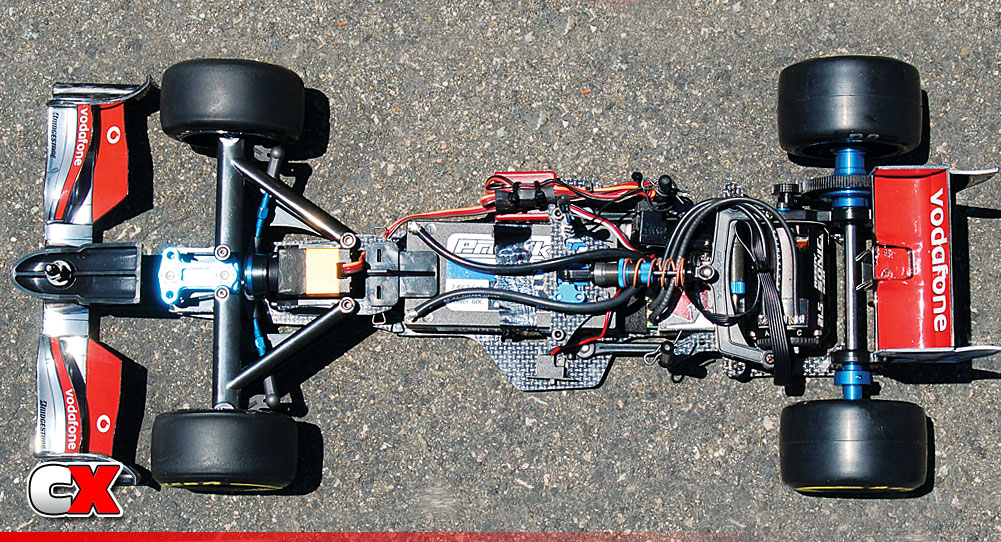
WHAT YOU NEED TO KNOW
• The F104 Pro uses a front suspension setup similar to that of a standard pan-car. Because of this, most pan-car front springs will work. For additional tuning, pick up a couple sets of springs from any of the popular pan-can aftermarket companies.
• The steering setup is simple and easy, but requires you to trim the mounting taps off of both sides of your servo. A smaller servo works best (Tamiya recommends their TSU-01 servo), but since this car is pretty light, you won’t need anything crazy to get it around the track. Just be aware that it might become a permanent addition to this car.
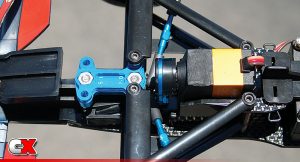 • The F104 Pro’s battery compartment is pretty slick. Remove 2 body clips, rotate the ESC-mounting plate slightly and out drops the battery. This setup works great for all stick packs and LiPos that have positive/negative leads, but those LiPos that have internal plugs are out of the question. You could do a little creative dremeling to make them work, but why would you? This car is just too beautiful to start hacking away at to get one of those batteries to work.
• The F104 Pro’s battery compartment is pretty slick. Remove 2 body clips, rotate the ESC-mounting plate slightly and out drops the battery. This setup works great for all stick packs and LiPos that have positive/negative leads, but those LiPos that have internal plugs are out of the question. You could do a little creative dremeling to make them work, but why would you? This car is just too beautiful to start hacking away at to get one of those batteries to work.
• The receiver and ESC mounting plates are pretty small, requiring small electronics. This allows Tamiya to create a super-realistic body with all the aerodynamic wings installed.
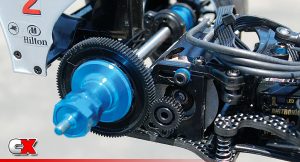 • One of my favorite features is the ‘hidden’ slipper adjustment nut. With previous F1 cars, you would have to remove the slipper adjustment nut if you wanted to remove the left rear wheel. With this ‘hidden’ setup, a setscrew holds a diff-cap in place that the tire attaches to. Removal of the tire is now like all standard RC cars (one nut), and if you remove the diff cap, you still have access to the slipper clutch.
• One of my favorite features is the ‘hidden’ slipper adjustment nut. With previous F1 cars, you would have to remove the slipper adjustment nut if you wanted to remove the left rear wheel. With this ‘hidden’ setup, a setscrew holds a diff-cap in place that the tire attaches to. Removal of the tire is now like all standard RC cars (one nut), and if you remove the diff cap, you still have access to the slipper clutch.
• The spur and pinion gear have an 04 Module tooth pitch (as opposed to the normal Tamiya 06 Module tooth pitch). This tooth pitch means finer gear teeth, a design which allows a more minute ratio adjustment to improve acceleration and efficiency.
• Tamiya sent along the following option parts: Aluminum Horn for Hi-Torque Servo Saver, Low Friction Suspension Ball Set, Soft T-Bar, an Aluminum Motor Mount (right & left) and an Aluminum Pivot Post. While all these aren’t necessary, the Soft T-Bar will help keep the car in check, and the Aluminum Motor Mount set will help remove any unwanted heat from the motor.
ITEMS NEEDED
• Servo
• Electronic Speed Control
• Brushless Motor
• Radio System
• Battery
• Body
• Wheels and Tires
ITEMS USED
• Savox SC-1258TG Servo
• Tekin RS Brushless ESC
• Reedy 17.5 Sonic brushless motor
• Airtronics M11x
• ProTek 3800mAh 60c ‘shorty’ LiPo
• Tamiya McLaren Vodafone body
• Tamiya F104 wheels
• Pit Shimizu tires
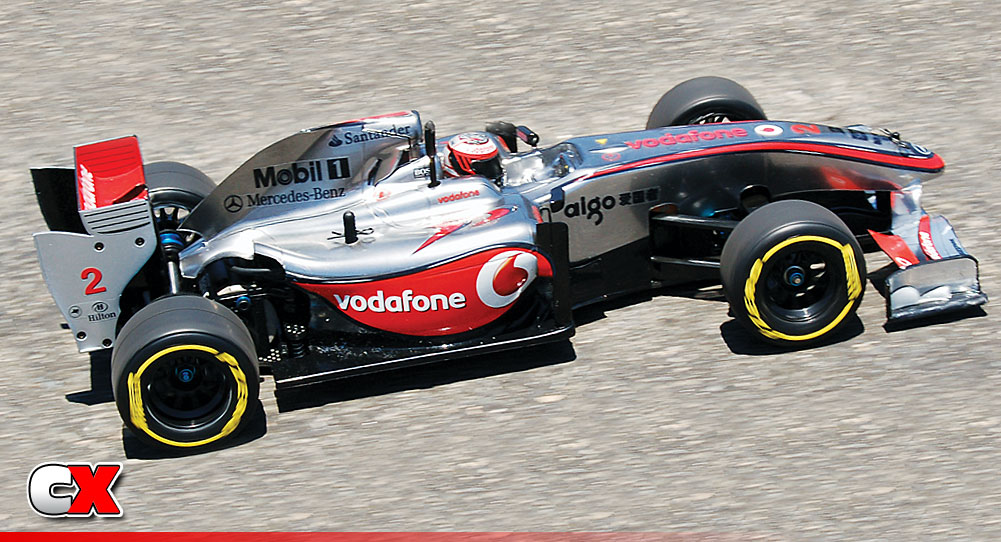
PROS
• Gorgeous carbon fiber chassis and blue aluminum parts included
• Pivot ball link rear suspension for greater cornering ability
• Aluminum roll damper to help control chassis roll
• Silky smooth ball differential
• Easy access battery compartment
• Retains proven F104 front suspension
• Allows fitment of all current F104 bodies
CONS
• Comes with a molded rear pod; however an optional blue aluminum one is available.
• No body, wheels or tires
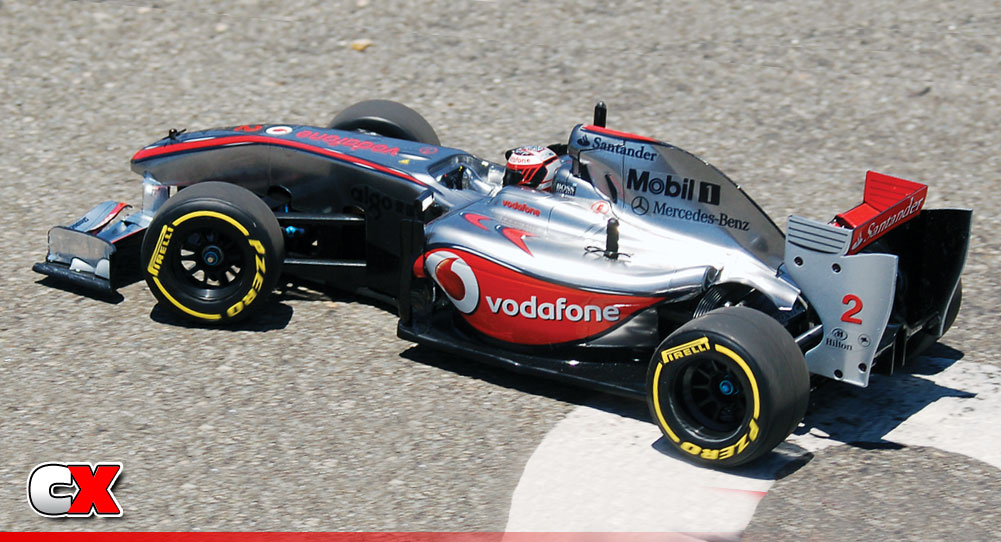
ON THE TRACK
STEERING NEUTRAL
Since all the F104 F1’s are 2WD, you can pretty much expect a little steering from the rear of the car. I decided to start off with a set of medium front tires to help settle the car down, but with the new rear suspension creating so much rear grip, I found myself switching over to the soft fronts to get it to turn. The steering is excellent and I found that driving smooth, controlled lines was the key to this car. Throwing into the turns would over power the front tires and cause a slight push, but that is something that might be tunable with the pivot ball link rear suspension.
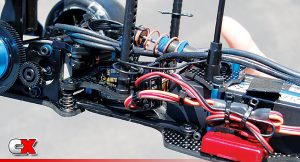 ACCELERATION VERY GOOD
ACCELERATION VERY GOOD
I tested the Version II Pro at Tamiya’s track in Aliso Viejo, California. This track is a high-bite circuit with a couple of fast sweepers and switchbacks. I set the car on the grid and mashed the throttle; acceleration is great for such a lightweight, 2WD car, but it did feel a little uncontrollable. I tried it again but this time feathering the throttle for the first five feet and found that was the ticket! Once rolling, however, it’s all about full throttle. The new rear suspension is fantastic and feels extremely planted when ripping from corner to corner.
BRAKING VERY GOOD
2WD does have its drawbacks and braking is definitely one of them. While the Version II does have quite a bit of rear grip, setting your brake value to high can still cause you to be facing the wrong way in no time. Back your brake value off (on your transmitter, if you can), drive deep into any braking zone on the track and mash the brakes. If the car spins out, lower that value some more. The new pivot ball link rear suspension should definitely allow a higher brake setting than any of the past T-bar cars, giving you the ability to actually out-brake someone into corners.
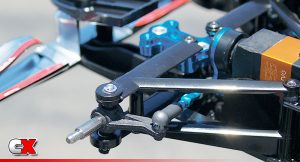 SUSPENSION EXCELLENT
SUSPENSION EXCELLENT
Almost every F1 I’ve tested utilizes a T-bar rear suspension. Overall, this is a pretty decent setup and can be adjusted by swapping out the T-bar to a different thickness or composition. I’m giving the F104 Version II Pro an excellent suspension rating for two reasons. One, it removes the T-bar from the car, a definite weak point in any hard collision, and replaces it with a solid side-link/spring setup. Secondly, it’s extremely easy to tune and works flawlessly. For high-bite tracks, pop off the side springs, replace with a harder set and thicken the fluid in the damper tube. For low bite tracks, soften the springs and damper fluid. The springs take literally about five seconds to change (the damper fluid a bit more time), but the result is a fantastic handling car with increased durability.
DURABILITY EXCELLENT
While the F104 Version II Pro is still pretty new, it is basically the same car as previous models. The front end utilizes the same parts as my F104x1 and I’ve beat that poor car up a few times. The part that I think will see the biggest durability increase is the rear suspension. Gone is the T-bar and, even though a soft, thin bar was needed to help control rear traction, it also created a major weak point should you have a bad crash. The new pivot ball link suspension uses a pair of thick, 3mm chassis plates connected with a pair of plastic side links. I’m a little concerned about the thickness of those links but I’m willing to bet they’re much more durable than the T-bar.
THE LAST WORD
Not to be outdone, Tamiya went back to the drawing board to release a new F1 that could lay the smackdown and keep them on the top of the heap. Combining their proven F104 chassis with the killer rear suspension of the RM01, they’ve developed a car that is not only easy to drive, but extremely tunable on almost any surface! With F1 growing leaps and bounds from SoCal to the East Coast, it’s nice to see Tamiya putting forth the effort to support and build a better F1.
LINKS
Tamiya, www.tamiyausa.com
Reedy, Distributed by Team Associated, www.reedy.com
Airtronics, www.airtronics.net
Tekin, www.teamtekin.com
 CompetitionX CompetitionX is the most up-to-date source for RC Car News, Reviews and Videos for Radio Control. We also have the most comprehensive Manual Database on the web.
CompetitionX CompetitionX is the most up-to-date source for RC Car News, Reviews and Videos for Radio Control. We also have the most comprehensive Manual Database on the web.








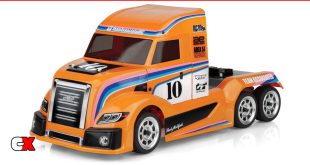
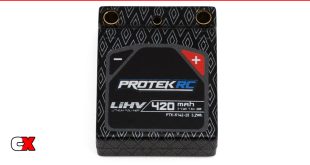
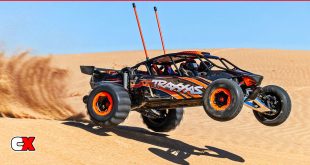
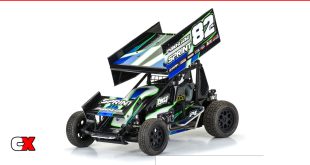
Best review I had found, keep the good work
Thank you!